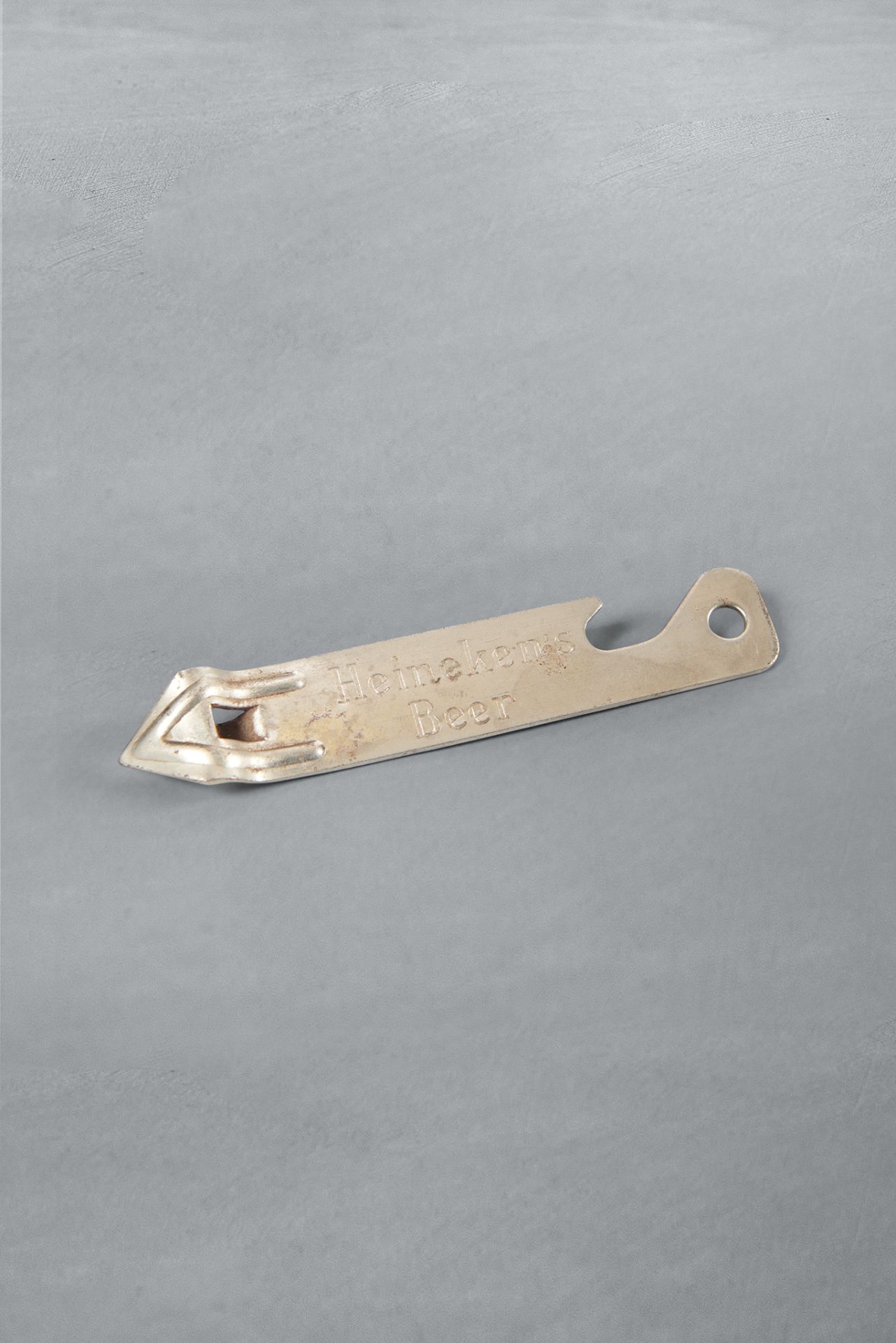Church key opener
The long line of beer openers from the Heineken Collection nicely traces how beer packaging has changed over the years. This clever opener from the 1950s, with one end for crown caps and one for cans, is one of the oldest examples.
Crown caps had been used on beer bottles for decades by this point and had outlived experiments with aluminium Alka bottle tops, which had proven insufficiently robust for transportation.
Tin opener
But a Heineken tin? We're not talking about baked beans here, are we? This requires an explanation. Even before World War II, Dutch breweries, including De Amstel and Van Vollenhoven, were experimenting with tinned beer for export. In the 1950s, Amstel was the first to resume canning with a view to exporting to the U.S.
Stabbing the can
The earliest Amstel can was literally the same kind of can, or tin, that was used for beans or vegetables. It was made of steel with a layer of tin to stop it rusting. But beer drinkers needed a special opener to puncture drinking and vent holes in the top. Surprise, surprise! The pointed end of this opener is just such a stab can opener!

In the air
At a time when flying was still the preserve of the wealthy, airlines were instantly drawn to cans as a practical alternative to glass bottles. But ordinary Dutch people had little use for expensive cans that were tricky to open. That's why Heineken, which was focused on home drinkers, didn't consider cans as ideal packaging. It wasn't until prosperity increased during the 1950s that Heineken began to opt for cans, 'Delicious and Handy' in the shopping bag . The packaging gradually became more user-friendly and beer cans began to be made with an aluminium lid and a pull tab around 1965.
From reliable to bizarre
As well as being an early type of opener, this little metal tool is an example of Heineken merchandise from the early days of consumer advertising. It's solid and functional, as was customary then. Nobody could've imagined the kinds of frivolous objects that would later be used to seduce beer-drinking consumers…

